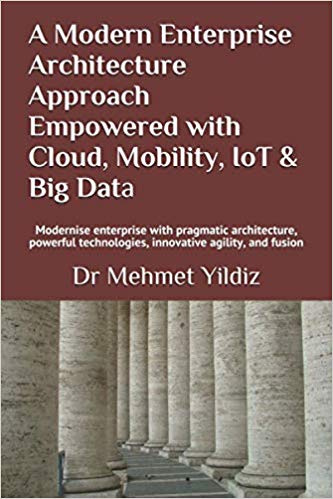
I authored this book to provide essential guidance, compelling ideas, and unique ways to Enterprise Architects so that they can successfully perform complex enterprise modernisation initiatives transforming from chaos to coherence. This is not an ordinary theory book describing Enterprise Architecture in detail. There are myriad of books on the market and in libraries discussing details of enterprise architecture. As a practising Senior Enterprise Architect myself, I read hundreds of those books and articles to learn different views. They have been valuable to me to establish my foundations in the earlier phase of my profession. However, what is missing now is a concise guidance book showing Enterprise Architects the novel approaches, insights from the real-life experience and experimentations, and pointing out the differentiating technologies for enterprise modernisation. If only there were such a guide when I started engaging in modernisation and transformation programs. The biggest lesson learned is the business outcome of the enterprise modernisation. What genuinely matters for business is the return on investment of the enterprise architecture and its monetising capabilities. The rest is the theory because nowadays sponsoring executives, due to economic climate, have no interest, attention, or tolerance for non-profitable ventures. I am sorry for disappointing some idealistic Enterprise Architects, but with due respect, it is the reality, and we cannot change it. This book deals with reality rather than theoretical perfection. Anyone against this view on this climate must be coming from another planet.In this concise, uncluttered and easy-to-read book, I attempt to show the significant pain points and valuable considerations for enterprise modernisation using a structured approach. The architectural rigour is still essential. We cannot compromise the rigour aiming to the quality of products and services as a target outcome. However, there must be a delicate balance among architectural rigour, business value, and speed to market. I applied this pragmatic approach to multiple substantial transformation initiatives and complex modernisations programs. The key point is using an incrementally progressing iterative approach to every aspect of modernisation initiatives including people, processes, tools, and technologies as a whole. Starting with a high-level view of enterprise architecture to set the context, I provided a dozen of distinct chapters to point out and elaborate on the factors which can make a real difference in dealing with complexity and producing excellent modernisation initiatives. As eminent leaders, Enterprise Architects are the critical talents who can undertake this massive mission using their people and technology skills, in addition to many critical attributes such as calm and composed approach. They are architects, not firefighters. I have full confidence that this book can provide valuable insights and aha moments for these talented architects to tackle this enormous mission turning chaos to coherence.
Genre: COMPUTERS / GeneralThis book has been published only 3 days ago and already sold several copies.
I have been practising enterprise architecture over two decades. Large organisations are substantially challenged with rapid change in technology and increasing demands of consumers. Every large organisation that I worked for had some transformation and modernisation programs to some extent at the enterprise level. I witnessed several failed initiatives caused by multiple factors which could be in their control or beyond their control. One of the major causes of the failure was difficulty in dealing with complexity. Enterprises have multiple dimensions spanning to many domains. These domains are tightly interrelated; hence, a minor issue with one domain can be reflected in many others.
For example, in a typical large organisation, just strategy and planning phase took over a year while hundreds of highly paid employees were churning and debating the ideas extensively. Once the program finally reached a consensus on the scope and approached the requirements management phase, the entire budget for the program was consumed. The organisation had to make all those talented people redundant. This typical and unfortunate example was a valuable lesson learned on how important to approach the modernisation iteratively rather than trying to perfect everything upfront. From hindsight, they could have set the strategy at a high level for a single domain and only plan one aspect of the strategy in the selected domain, test it with the allocated budget, and produced some desirable results.